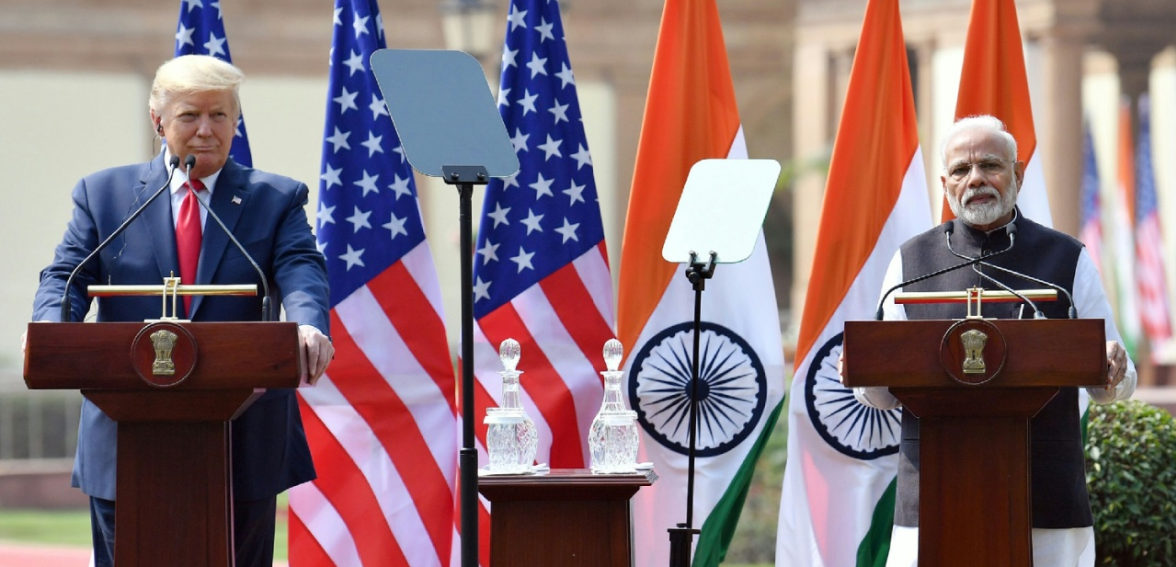A New, Transactional Era in US-India Relations

President Trump’s volte-face on India will not be reversed anytime soon, but that does not mean cooperation over matters of shared interest is a dead letter.
President Donald Trump has ushered in a new era in US-India relations. Considerable time and effort will be required to move US-India relations away from this new transactional era and back to the path of partnership.
Trump’s heavy-handed approach through a so-called “reciprocity” for trade deficits, a punitive tariff for purchases of Russian oil, and a 50-fold increase in fees for H1-B visas comes on top of Trump’s exacerbation of the Pakistan issue by claiming that he brought an end to fighting between India and Pakistan earlier this year. Although a trade agreement of sorts may be reached, the damage that has been done will not be easily repaired. The extent of this damage can be measured by India’s closer relations with Russia and China, as well as the rising tide of anti-American sentiment that Trump has sparked.

US-India relations can be divided roughly into three eras: 1947–1968 was the era of independence when the main issues were Indian autonomy and poverty alleviation; 1969–1992 was an era of estrangement marked by Indian economic protectionism and the United States appearing to side with Pakistan and China against India; 1993–2024 was a period of reconciliation with economic relations opened, common values extolled, and China recognized as a common threat.
Perhaps the apogee of that reconciliation era was reached when the administration of President Joseph Biden adopted a policy of “strategic altruism.” This policy was premised on the belief that support of Indian success was in the US national interest, regardless of whether it involved a direct quid pro quo.
When Trump came to power for a second term, many in the policy communities of India and the United States initially thought that the similarities between the leaders would promote a closer relationship between the United States and India than ever before. Modi was one of the first leaders to meet with Trump after his inauguration. The reviews of the meeting were positive on both sides. Both Trump and Modi seemed enamored by the “great man” theory of international relations, and it appeared that these leaders would overcome policy discontinuities based on their personal strengths and compatibility.
Since neither man seemed much interested in democratic values as foundational to international relations, Indian policy makers looked forward to a US administration that would be free of pronouncements about weaknesses in Indian democracy and especially the treatment of minorities. After all, Trump was against “diversity, equity, and inclusion” and took steps to limit immigration, especially from predominantly Muslim countries. Also, Trump’s initially friendly outreach to Russian president Vladimir Putin suggested that he would not interfere with India’s arms and oil imports from Russia.
What had not been taken into account was Trump’s view that in any situation there is only room for one “great man,” only one winner, namely himself. After the April 22, 2025, terrorist slaughter of Indian tourists in Kashmir and the ensuing hostilities between India and Pakistan, Trump wanted full credit for the ceasefire. India was unwilling to give him credit, while Pakistan gave him full recognition and even nominated him for a Nobel Peace Prize, an honor that Trump has pursued assiduously.
Regarding the tariffs, Trump’s orientation has been that of a real estate developer, primarily interested in the transaction at hand, rather than in building a long-term relationship. Unfortunately, this transactional approach has found receptiveness among “realist” Indian policy makers who have doubted American foreign policy motives from the start.
Eight months into the Trump administration, the US-India relationship has deteriorated to such an extent that it could be said that a new era in US-India relations has begun. The new era is in danger of resembling the previous period of estrangement. However, over the last thirty years, common interests in economic engagement, Indo-Pacific security, people-to-people contacts, health, and a broad range of other issues have grown so much that complete estrangement is unlikely.
More probable is an era of transactions on specific issues of common interest. During this period, the upward curve in US-India relations, which has been experienced over the last three decades, will likely bend downward as India seeks alternatives to its relationship with the United States, first with Russia and China, and second with the other nations of the BRICS and the “Global South.”
Three factors could work to change this gloomy scenario.
First, the salience of one or more of the aforementioned common interests could increase to such a degree that the United States and India resume their work to create a wider partnership. For example, this could occur in response to actions of territorial aggression by China, either directly or in support of India’s archrival, Pakistan. It could occur with the advent of another common health crisis. It is even possible that Indian-Americans could elevate the importance of good US-India relations and, in conjunction with other parts of the American polity, ally to provide a political incentive to the resumption of reconciliation.
Second, an economic and political resurgence of non-US free market democracies, such as those in the European Union, Japan, South Korea, and Australia, could attract India away from Russia and China. In that case, there would be pressure on the United States to move away from a transactional approach and a greater possibility for the United States and India to resume the path of reconciliation.
Third, political changes in both the United States and India recast democratic values as a primary component of the domestic and foreign policies of India and the United States. This sea-change is perhaps the most unlikely factor to occur in the short to medium term. However, the history of relations between Washington and New Delhi shows that growing similarities between the political and economic values of the two countries played a significant role in reconciling the countries and moving them on the upward path of partnership prior to 2025.
President Trump’s actions have laid bare fault lines that have long hindered cooperation between the two countries—fault lines involving Pakistan, Russia, and economic protectionism. Bridging these fault lines will require time and the concerted efforts of proponents of the relationship in both the United States and India, if it is to occur at all. None of these chasms will be bridged without a re-emphasis on the democratic values component of the relationship.
- Questions and Answers
- Opinion
- Motivational and Inspiring Story
- Technology
- Live and Let live
- Focus
- Geopolitics
- Military-Arms/Equipment
- Seguridad
- Economy
- Beasts of Nations
- Machine Tools-The “Mother Industry”
- Art
- Causes
- Crafts
- Dance
- Drinks
- Film/Movie
- Fitness
- Food
- Juegos
- Gardening
- Health
- Home
- Literature
- Music
- Networking
- Other
- Party
- Religion
- Shopping
- Sports
- Theater
- Health and Wellness
- News
- Culture

